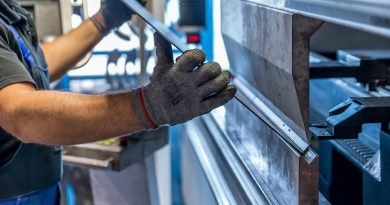Now carbon footprint at Saint-Gobain is calculated for structures
At Saint-Gobain, the calculation of CO2 emissions has already progressed from the product level to the structural and construction level. Structural-specific emission data are published in the structural library and can be used to assess the environmental impact of a building’s life cycle.
In recent months, Saint-Gobain Finland has calculated the carbon dioxide emissions of the company’s various brand building solutions on a large scale. Where the environmental statement (EPD) describes the environmental impact of a product, the data now being calculated expresses the CO2 emissions of complete building solutions. Emission calculations have been made for Gyproc, Weber and ISOVER solutions, which include numerous exterior and partition wall structures, upper and lower floor structures, and roof structures.
Calculating further refined emission data, i.e. CO2 emissions from building solutions, is a natural step for Saint-Gobain, which is known worldwide as a pioneer in environmental documentation and sustainable construction solutions. Saint-Gobain Finland intends to be carbon neutral by 2035.
Emission data will be needed in the near future
The obtained data is utilized internally in the development of low-carbon construction solutions. The information will also be available to customers, designers and consultants in structural libraries, so that the carbon footprint of similar structures can be compared reliably.
Emission data are essential for calculating the carbon footprint of an entire building. The regulations on the low-carbon life cycle of buildings will enter into force in 2025. Emission data for Saint-Gobain structures are compatible with the method for assessing the carbon footprint of buildings.
The calculation is based on the European Commission’s Level (s) method, which assesses the resource efficiency of a building.
The multi-step calculation method is reliable
At the beginning of the emission calculation, all parts of the structure are determined with the help of a structural diagram. The mass of each part of the structure is then determined. For example, the transport distances of materials, the degree of occupancy of the transport and the loss percentage of the construction site are also taken into account. The calculation utilizes the information provided in the environmental statement (EPD) of the materials.
The final reading tells you how many kilograms of carbon dioxide are generated over the entire life cycle of a structure from an area of one square meter.
The calculation is done twice: first with a spreadsheet program and then with a One Click LCA calculation program. Comparing the values obtained ensures that the result is reliable.
A team of young professionals
During the summer, the calculation of emissions data has been promoted intensively at Saint-Gobain with the help of three people. During this time , Juuso Kokkonen , Natalia Pennanen and Jesse Seila , students of the degree programs in construction engineering and energy and environmental engineering at Karelia University of Applied Sciences , have developed into emission calculation experts.
The importance of life cycle thinking will increase even more in the near future. Carbon dioxide emissions will be crucial in the design phase of the building.
Natalia Pennanen
Low carbon has already become a key requirement for materials alongside traditional properties, such as cost efficiency and strength.
Juuso Kokkonen
Saint-Gobain Finland’s Sustainability Manager Anne Kaiser praises the team’s work and attitude as excellent.
It has been a pleasure to follow their enthusiasm and skilled work. Karelia University of Applied Sciences is doing pioneering work in training future LCA professionals. Collaboration with educational institutions is rewarding for us – students really teach us others.
Anne Kaiser
There are far-reaching benefits to training
Saint-Gobain and Karelia University of Applied Sciences have collaborated in favor of low-carbon construction with excellent results. The information gained during the internship is still utilized after returning to studies.
Student internships are a fruitful part of business cooperation. In their studies, students receive basic knowledge of low-carbon construction and calculation. During the internship, they get to deepen their skills. The aim is to share the knowledge acquired by students with other students and teaching staff through workshops held immediately in the autumn. At its best, in such an interactive collaboration, our students also teach our teaching staff.
Ville Mertanen, a project expert at Karelia University of Applied Sciences




